If you were to jump in a time machine, set the dial back five years and search eBay, it would look quite different. Back then, the marketplace was brimming with vibrantly designed and customized eBay stores and listing templates, because there was little question over the positive impact that a custom eBay store design had on sales.
Return to the present day though, and a lot has changed. eBay banned Active Content and introduced features that hide the listing description in some circumstances. Also, many more buyers are shopping on mobile phones and tablets, where the description is hidden by default.
As a result of these changes, there are increasingly more restrictions on customized eBay store designs. But there are still options for custom-designed eBay templates that can help increase sales and encourage return customers.
In this post I’ll look at the pros and cons of custom eBay listing templates considering the current restrictions. Is it still possible to have the best of both worlds: a strongly branded design that works perfectly on desktop and mobile browsers, complies with all of eBay’s policies, and – most importantly of all – increases your overall eBay sales.
| Do you have a great business idea, but you don’t know how to get started selling online? 3Dsellers. With 3Dseller, you can find an all-in-one solution that will offer you a full range of automated tools for eBay. The platform is packed with features that help you research potential, monitor and manage your business, and finally develop everything concerning your business. So whether you’re just getting started or you’ve been in business for years, 3Dseller has everything you need to take your business to the next level. Get 7 days free trial to find out more about 3Dseller capabilities. |

Get 7 days free and explore the capabilities of 3DSELLER!
Designing an eBay Store or listing
eBay storefronts have changed dramatically since the site’s launch 25 years ago, much like the internet has changed as well. Up until a few years ago, there were generally two ways to personalize the experience for your buyers. An eBay Store design created a customized branded store front. An eBay listing design personalized individual listings.
For now, when it comes to listings, there are various companies that offer eBay design templates and tools to help improve the attractiveness of your listings. Some of these companies include 3Dsellers, CrazyLister and Froo! Template Themes. They include various levels of customization.
Many eBay sellers turn to custom eBay listing designers. Rather than using eBay design templates, they work with you hand-in-hand to create a fully unique and branded experience for your buyers. Some of these design companies include dZine-Hub, Frooition eBay Design and Just Template IT.
The biggest design change from just a few years ago is that it is no longer possible to create a custom eBay Store design. Although it is still possible to set up an eBay storefront and customize its appearance within the parameters set by eBay, there are more restrictions now than there once were. The result is that most design options currently focus on listings more than store designs.
| Starting Pricing | £39 |
|---|---|
| Pricing Model | Tiered Based |
| Free Trial | 10 days |
| Free Version | No |
| STARTING PRICE | $49 per month |
|---|---|
| PRICING MODEL | Tiered Pricing |
| FREE TRIAL | Yes |
| FREE VERSION | Yes |
| STARTING PRICE | From $10.99 per month |
|---|---|
| PRICING MODEL | Usage-Based |
| FREE TRIAL | 7 days |
| FREE VERSION | N/A |
| STARTING PRICE | 2% flat fee on gross sales |
|---|---|
| PRICING MODEL | Usage-Based |
| FREE TRIAL | N/A |
| FREE VERSION | N/A |
| STARTING PRICE | $19.99 per month |
|---|---|
| PRICING MODEL | Tiered Pricing |
| FREE TRIAL | Yes |
| FREE VERSION | Yes |
How have eBay storefronts changed?
It has been a period of change for eBay over the last few years, as they have tried to align their marketplace with the changing demands of buyers. This includes a growing preference for shopping on mobile devices, and the majority of sales being fixed price manufactured products rather than auctioned collectibles.
In the Spring 2018 Seller Release, eBay announced that custom eBay Store designs would be phased out starting from May 2018. This marked the end of eBay store designs, but there was no change to listings.
Some of the other changes that had the biggest effect on the way sellers use store and listing designs include:
Active Content policy
In June 2017, eBay banned the use of Active Content in listings, because they felt it slowed mobile browsing and created potential security vulnerabilities. This meant sellers had to remove any elements that were powered by JavaScript and Flash, or they would simply stop working.
JavaScript in particular was a common component of custom listing eBay templates and store designs. Many sellers who bought a custom design prior to the ban found that key parts of the template, such as navigation menus and advertising banners, stopped working. The result can be the exact opposite of what a design is supposed to achieve: an amateurish, broken listing that hurts sales.
Sellers caught out by the Active Content ban had to get their designs fixed, often at their own cost, or remove the design completely. Going forward, sellers have to be more careful about which design templates or services they use, because they don’t want to pay hundreds of dollars (or more) for a template that doesn’t comply with the eBay Active Content policy.
Mobile browsers and the mobile eBay app
It’s no secret that buyers are increasingly likely to make online purchases using a mobile device. eBay is no exception to this trend. Approximately $12.9 billion of their sales were completed on mobile devices in Q1 of 2020 alone, accounting for just over 60% of total sales during that period. eBay mobile app downloads worldwide reached 514 million as of 2020.
The shift away from desktop and laptop computers changed the way that eBay sellers need to approach listing design, with responsive design playing an increasingly important role. This means developing a design that automatically adjusts to look good on screens of all sizes.
Hidden descriptions
Traditionally, product descriptions were crucial for eBay sellers. It was their chance to advertise themselves and their product, and entice the buyer into purchasing an item from them. It is here that any listing design is added, as full HTML markup is allowed.
But product descriptions are slowly becoming less visible on eBay. If you buy products on eBay’s mobile app, the description is hidden by default – you have to click to see it at all. And it’s not just on mobile, this is also happening on desktop, either through eBay hiding descriptions as part of random tests, or through the new Group Similar Listings function (covered below).
These changes left some sellers wondering whether a listing design is worth the cost, as some shoppers are buying products without seeing the description at all.
Group Similar Listings
Group Similar Listings was rolled out by eBay in late 2017. It allows buyers to group search results, so that all listings for the same product appear under one search result and product listing page. On this page there’s no description, only the item specifics, meaning a buyer could purchase the product without seeing the description.
For manufactured products sold by several competing sellers, this could render listing designs redundant. But, it’s important to remember that it is currently not the default setting. It’s still possible to navigate through to the full listing page, and many buyers are still searching for products without grouping listings.
Search engine updates
eBay launched the Cassini search engine back in 2013. It gave rise to a lot of speculation about how to rank highly in search, and the operation of the new default “Best Match” ordering of results.
Rumors were rife on eBay forums that listings dropped in search due to eBay’s new technology handling HTML badly.
Now, no one other than eBay knows for sure whether Cassini really does dislike listings with HTML, but the speculation led many eBay sellers to completely ditch their store and listing designs.
So why have an eBay listing design at all?
The result after all of these changes is that it is no longer possible to create a customized eBay Store design. There are elements of an eBay Store, however, which can still be tailored to your brand. And it is still possible to customize eBay listings. The question is now whether it is worth it?
Some sellers may think that the sole purpose of having a listing design is just to make their products look pretty, but the impact can be far bigger than that. In fact, it can help you sell more, and offer your buyers a better shopping experience.
A well-designed eBay template should be a cornerstone of your branding, getting your business personality across to your customer and telling them what you are all about. Establishing an appealing brand can help with:
- Repeat business – customers remember who you are and what you sell, so come back more.
- Conversion rate and pricing – a seller who looks trustworthy and knowledgeable can make more sales, and set their prices a little higher.
- Cross-selling (getting buyers to add additional products to an order) – a good brand can communicate everything you sell much more quickly than just describing it in words.
A good design can also help you draw attention to any promotions, such as discount promotions, that you are running. By using a custom design with dynamic elements (so they can be changed without having to edit every listing) you can showcase whichever offers you choose.
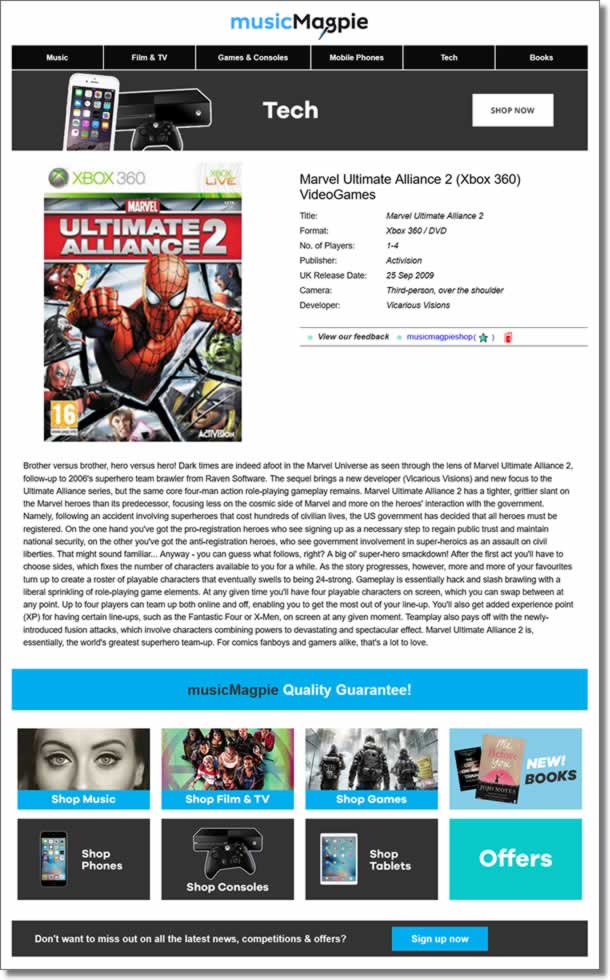
A final reason is that you can suggest related products that buyers might like and provide links to different categories of products that you sell. Buyers may never see your storefront. But by having a custom-designed eBay listing template it’s much the same, because you have a consistent design theme and can surround buyers with your products.
What are my options to customize my eBay listings?
Because it is no longer possible to design eBay Stores, the real customization lies with eBay listings. When it comes to eBay listing design, sellers have three options.
1. No design at all – a basic eBay listing
With these recent changes, eBay has modernized its look and provided sellers with the opportunity to brand their storefront to some extent. eBay in no way forces you to create custom listing designs. You have the option to just choose the default that eBay sets.
There are a number of reasons why sellers may choose not to have a design. As we’ve already mentioned, it could be because they believe HTML plays badly with Cassini, or that other designs they’ve seen look bad on mobile devices, or even that they think product descriptions barely matter anymore.
Another possible reason is due to sellers’ past experiences with paying an eBay store or listing designer. After the initial eBay store setup, oftentimes sellers didn’t update the template. Or, they didn’t want to pay a monthly subscription fee to keep the design compliant and working. Either way, the listing template would stop functioning and cause a big headache sellers don’t want to deal with. This was a problem for eBay store designs, but also can be a problem for listing designs.
Possibly the biggest downside to not using any type of design is that listings can look amateurish, especially on desktop. Now, while the focus is increasingly shifting to mobile, it shouldn’t be forgotten that many buyers still use desktop or laptop computers. Sellers who choose to go with plain text listings could risk losing out with these customers.
2. eBay design software and listing templates
When it comes to eBay design tools, there are several to choose from. Most create listing templates, that you can use to create individual eBay listings. You usually start by linking your eBay account to the software. Then there are a number of fully customizable eBay templates to choose from. Each one will have placeholders for elements such as images and the product description, and marketing features like cross-selling galleries.
You really want to use a service that offers responsive design templates and a function to preview the result on different screen sizes. That way the design will work well on desktops, tablets, mobiles and the eBay app. You can make your own decisions on how your listings appear on screens of different sizes.
You will also need to check that the templates provided are compliant with eBay’s Active Content policy, as you don’t want to spend time perfecting a design that won’t work. They may state clearly that they are compliant with Cassini, the 2018 Seller Release, or the Active Content policy.
When you’ve created your eBay listing template, there are a few different ways you can use it:
- Copy and paste the HTML into eBay’s listing page, and add the specific product information there.
- Some tools have a built-in lister where you add product images and description and it posts the listing to eBay directly.
- You can use the template with your own multichannel management system. This is easiest if the design tool can create templates that are compatible with the system you use.
- Some tools can apply the template in bulk to your existing eBay listings, either as a standard feature or as an additional service that you pay for.
It’s important to note that eBay design tools are usually subscription services, so after you’ve created your template you will have to keep paying monthly, or it will stop working abruptly.
3. A full custom-designed template
If you’re looking for a higher level of customization for your eBay listing design and want one that’s unique to your brand, then an eBay design service could be the right option for you.
With this approach, you find a designer and brief them on what you are looking for. This could just be an eBay design template, but it’s not uncommon for sellers to use it as an opportunity to create a whole new brand identity, which may include logos, banner graphics and even an independent ecommerce store.
After you’ve briefed the designer, they’ll give you a quote for the project and if you’re happy, they’ll either start work straight away or add it to their schedule.
Unlike design software, where you can create your own eBay listing template in just a few hours, it can take a few weeks to get your design ready. The process will differ between companies, but here’s a typical example:
| When | Who | What |
|---|---|---|
| Pre-project | Seller and Design Company | Agree price and date work will start. |
| Pre-project | Seller | Makes first payment. |
| Week 1 | Seller | Completes questionnaire about their business, design preferences, competitors, goals etc. |
| Week 1 | Design Company | Assigns a team (if applicable – some designers are sole traders, others have Project Managers, Designers, and Developers). |
| Week 1 | Seller and Design Company | Conference call to talk through the questionnaire, raise questions and make sure it’s all understood. |
| Week 2 | Project Manager | Creates specification for the designer. |
| Weeks 2-3 | Designer | Creates a static mock-up of how the design will look. |
| Weeks 3-4 | Seller | Gives feedback. The Designer revises the mock-up. There may be several rounds of revisions. |
| Week 4 | Seller | Approves the mock-up design and makes a second payment. |
| Week 5 | Developer | “Codes-up” an interactive design and installs it on a test listing or website. |
| Week 6 | Seller | Gives feedback, asks questions, and tests the design. Revisions are made, and feedback given again. |
| Week 6 | Seller and Design Company | Agree a go-live date. Training on using the design may be given. |
| Go-live date | Developer | Updates the seller’s listings. Configures seller’s listing software. |
| Go-live date | Seller | Tests again, asks questions and gives feedback. Changes might be made. |
| After go-live | Seller | Makes the final payment. |
| Post-project | Seller and Design Company | The project is now complete and any further work should be handled under a maintenance and support agreement. |
The end result will usually include several pages to upload for your eBay store, and a listing template that you’ll need to apply to individual product listings.
There is usually a hand-over, where the HTML is given to you to copy into eBay or your listing management software. Some services may offer to apply the HTML to your existing listings for you, often for an additional fee.
The important thing to remember about using a third-party eBay design service, is that you usually buy the template as a one-off. This means that if you need it updated in the future, for example to comply with future policy changes, you’d have to pay them to alter the template.
How to choose a custom eBay listing designer
If you think that a custom-designed template is right for your business, then you’ll need to choose an eBay design company to create it for you. The most important factors to consider during this process are:
- Do they have experience designing eBay listing templates? Can they provide you with references and links to their past work?
- When can they start work? How long will the template take to create?
- What’s their testing process like? Who does the testing, and which devices and platforms do they test on?
- Are the designs compliant with the Active Content requirements and how are they optimized for mobile devices?
- What happens if you don’t like the design? Will they start afresh or let you cancel?
- Who owns the design? Can you make alterations or adapt the design to use elsewhere, or are you tied to them for that?
- If they make a mistake, will they fix it for free? How long after the work ends will they do that?
- Is there any ongoing subscription? What happens if you cancel it?
It is also a good idea to choose a designer that you communicate well with, and to get an itemized contract specifying exactly what is included, and which services are at an additional cost.
Which is the best option for an eBay listing design?
When it comes to eBay listing design, there isn’t a one-size-fits-all answer. It largely depends on what products you sell and the type of seller you are – the needs of a solo hobby seller are generally going to be different from those of a business with twenty staff.
On the whole though, having no design can work best for:
- Sellers who offer items that eBay has really detailed catalog information on, so all the necessary description has already been generated. Some DVDs fall into this category, and the listing can look odd if the description is “doubled-up” with the seller’s own template.
- Sellers with no time to keep up with future policy changes, and update their listings if necessary, or to carry out occasional testing to make sure their listings still look good on different devices.
- Sellers who are unwilling to spend any money on a design tool or a custom design service.
For sellers that want the easiest, simplest life and to have no worries about whether an eBay listing template will stop working, it makes sense to go with plain text. It can’t break and won’t look bad on other browsers and devices. Yes, there isn’t the benefit of branding your business, but some sellers will be happy with that trade-off.
eBay design tools are best suited to sellers who want the benefits of branding, but don’t have the time, resources or possibly even the need, to have a completely custom-built design. Most eBay design tools work on a subscription basis, which should be cheaper in the short-term than a custom design, typically costing between $10 and $40 per month.
It is important that sellers are reasonably comfortable with the basics of design, so can make good changes themselves, or are happy to use the premade templates as they are. A good understanding of eBay’s policies and the fact that buyers use different devices is also crucial. Using an eBay listing template doesn’t mean sellers shouldn’t care about Active Content or mobile optimization. While the templates should be fully compliant, it’s prudent to do your own testing.
The final option of a custom eBay design service is best suited to serious eBay sellers, who have a clear idea of what they’re looking to gain from having a unique design.
A full eBay custom listing template is more expensive than using software tools, at least in the short term, and is likely to take quite some effort on the seller’s part. Yes, the designer is the expert, but they will need a detailed briefing upfront and feedback along the way. Sellers should consider a custom design if they are willing and able to put time, as well as money, into making it work.
Once again, it is a good idea to be involved in the testing process and to have a solid understanding of the browsers and devices that buyers might purchase your products on.
In Closing
Ultimately, whether you decide to use an eBay listing tool or get a custom-made template, it is still possible to have the best of both worlds.
You can have a design that gives you all of the marketing benefits, and that looks professional across all devices, without encountering the downsides mentioned at the start.
It just isn’t as easy as it was five or ten years ago. eBay listing design is no longer something that you can take for granted. It requires ongoing work to make sure you comply with eBay’s policies, and wider changes in technology and shopping habits, to have a design that stays looking good no matter how a buyer views it.

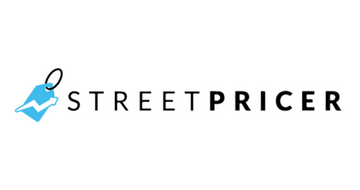
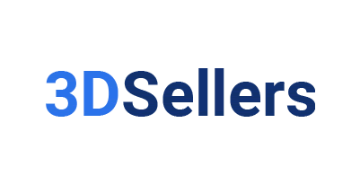


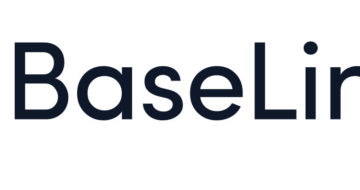
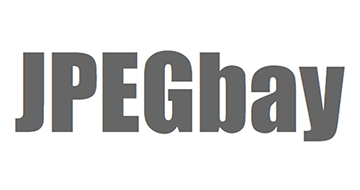


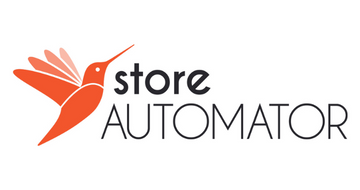
I agree with the first post about mobile, 45% of ebay purchases are touched by mobile so they said on the webinar last week so I think £1000 IS excessive if it doesn't work on mobile, especially if eBay are now giving you a professional shop front for free. Nothing worse than all that scrolling and zooming, at least the text ones are readable. There are the odd ones I've seen are nice on mobile though I have to say.
Yes, they can look good on mobile which is one reason we used Crazylister, but the problem is unless buyers click the arrow next to where it says "Description" - and most won't - they'll never see it. WE didn't even realise this until recently, when it was noticed that ebay default to the mobile view when looking at the listing on a smartphone.
Something we didn't realise is that if we reuse a Crazylister template and edit it on ebay rather than on Crazylister is the original text description is retained. So for example, if you were selling an umbrella and reuse the listing template to sell forks, the description on mobile will actually still show the umbrella text. It's a real pain because we have almost 3000 listings and have no idea how many listings are currently showing the wrong description on mobile. I'm not sure if the same thing happens with other 3rd party listers.